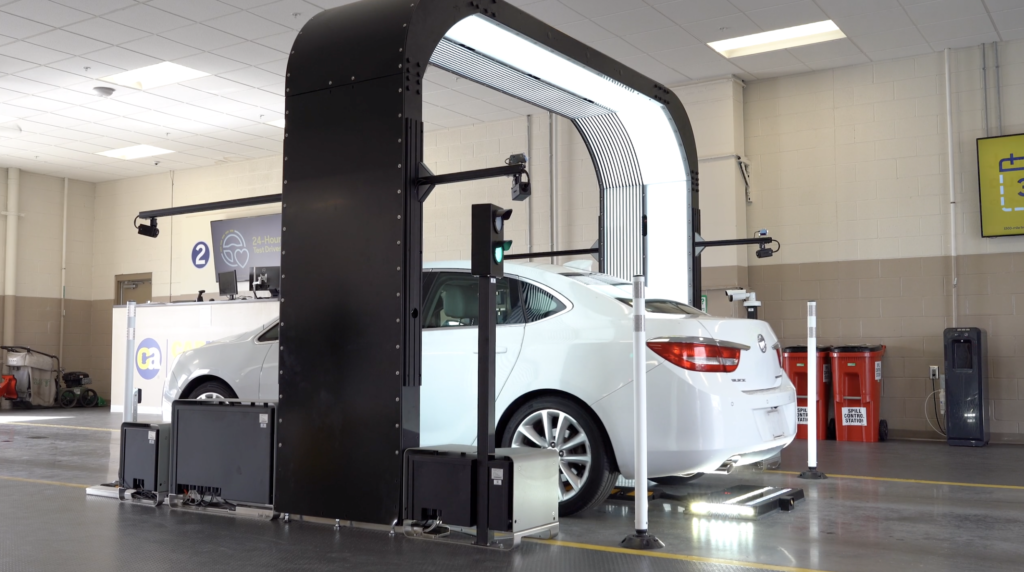
How Does an Automatic Vehicle Inspection Lane Improve Efficiency?
In the automotive industry, efficiency is key to maintaining optimal operations and ensuring the smooth functioning of vehicles. Automatic Vehicle Inspection Lanes (AVILs) have emerged as a revolutionary solution to streamline vehicle inspection processes and enhance efficiency. But how exactly does an Automatic Vehicle Inspection Lane improve efficiency? Let’s explore the various ways in which this technology-driven solution revolutionizes vehicle inspections.
Automatic Vehicle Inspection Lanes
Automatic Vehicle Inspection Lanes are advanced systems designed to automate the vehicle inspection process. Equipped with a range of sensors, cameras, and diagnostic tools, AVILs can quickly and accurately assess the condition of vehicles, identifying any issues or abnormalities that may require attention.
Streamlining Inspection Procedures
One of the primary ways in which an Automatic Vehicle Inspection Lane improves efficiency is by streamlining inspection procedures. Traditional manual inspections often involve time-consuming and labor-intensive tasks, such as visual inspections and manual measurements. AVILs automate these processes, allowing vehicles to undergo comprehensive inspections in a fraction of the time required by manual methods.
Reducing Inspection Time
By automating inspection procedures, Automatic Vehicle Inspection Lanes significantly reduce the time required to assess each vehicle. With advanced technology and algorithms, AVILs can swiftly analyze various aspects of a vehicle’s condition, from tire tread depth to brake performance, with unparalleled speed and accuracy. This reduction in inspection time translates to faster turnaround times and increased throughput, enhancing overall operational efficiency.
Enhancing Accuracy and Precision
In addition to saving time, Automatic Vehicle Inspection Lanes also improve the accuracy and precision of inspections. Human error is inherent in manual inspection processes, leading to inconsistencies and inaccuracies in assessment results. AVILs, on the other hand, rely on advanced sensors and algorithms to deliver precise measurements and diagnostics, minimizing errors and ensuring reliable inspection outcomes.
Identifying Potential Issues Early
Another key benefit of Automatic Vehicle Inspection Lanes is their ability to identify potential issues early on. By conducting comprehensive inspections on a regular basis, AVILs can detect minor defects or abnormalities that may go unnoticed during manual inspections. Early detection allows maintenance personnel to address issues proactively, preventing costly breakdowns and downtime down the line.
Improving Maintenance Planning and Scheduling
With real-time data and insights provided by Automatic Vehicle Inspection Lanes, fleet managers can improve maintenance planning and scheduling. By tracking vehicle condition and performance over time, AVILs enable proactive maintenance interventions, such as scheduling routine servicing or replacing worn components before they fail. This predictive approach to maintenance helps minimize unplanned downtime and prolongs vehicle lifespan.
Optimizing Resource Allocation
By automating inspection processes and improving maintenance planning, Automatic Vehicle Inspection Lanes optimize resource allocation within automotive facilities. With fewer manual inspections required, personnel can be redeployed to other critical tasks, such as repairs, customer service, or training initiatives. This strategic allocation of resources enhances overall operational efficiency and productivity.
Conclusion
In conclusion, Automatic Vehicle Inspection Lanes play a pivotal role in improving efficiency within the automotive industry. By streamlining inspection procedures, reducing inspection time, enhancing accuracy and precision, identifying potential issues early, improving maintenance planning and scheduling, and optimizing resource allocation, AVILs revolutionize vehicle inspection processes and drive operational excellence. As automotive technology continues to evolve, the adoption of Automatic Vehicle Inspection Lanes will undoubtedly become increasingly prevalent, further enhancing efficiency and productivity across the industry.
FAQs
How does an Automatic Vehicle Inspection Lane differ from traditional manual inspection methods?
An Automatic Vehicle Inspection Lane utilizes advanced technology, such as sensors and cameras, to automate the inspection process, whereas traditional methods rely on manual assessments by technicians. AVILs offer faster, more accurate, and consistent results compared to manual inspections.
Are Automatic Vehicle Inspection Lanes compatible with all types of vehicles?
Yes, most Automatic Vehicle Inspection Lanes are designed to accommodate a wide range of vehicles, including cars, trucks, buses, and commercial fleets. These systems are adaptable and customizable to meet the specific needs and dimensions of various vehicle types.
How often should vehicles undergo inspection in an Automatic Vehicle Inspection Lane?
The frequency of vehicle inspections in an Automatic Vehicle Inspection Lane depends on factors such as regulatory requirements, vehicle usage, and maintenance schedules. Generally, vehicles may undergo inspections on a regular basis, such as monthly, quarterly, or annually, to ensure ongoing safety and performance.





Leave Your Comment